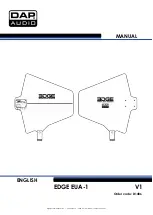
5
Cisco Aironet 9.5-dBi Patch Antenna (AIR-ANT5195P-R)
78-16671-01
Installing the Antenna
Site Selection
Before attempting to install your antenna, determine where you can best place the antenna for safety and
performance.
Follow these steps to determine a safe distance from wires, power lines, and trees.
Step 1
Measure the height of your antenna.
Step 2
Add this length to the length of your tower or mast and then double this total for the minimum
recommended safe distance.
Caution
If you are unable to maintain this safe distance, stop and get professional help.
Generally, the higher an antenna is above the ground, the better it performs. Good practice is to install
your antenna about 5 to 10 ft (1.5 to 3 m) above the roof line and away from all power lines and
obstructions. If possible, find a mounting place directly above your wireless device so that the lead-in
cable can be as short as possible.
Installing the Antenna
You can install the antenna on any flat vertical surface or on a mast using the mast mounting kit. An
articulated mast mounting kit is also available. Hardware for mounting the antenna on drywall is
provided. If you intend to install your antenna on another surface, you must provide the appropriate
hardware.
Tools and Equipment Required
An installation kit is shipped with the antenna and consists of the following hardware:
•
Four #8 x 1¾-in. sheet metal screws
•
Four screw caps
•
Four screw cap washers
You need the following tools and equipment, which are not provided.
•
A #2 Phillips screwdriver
•
A drill
•
A 3/16-in. (4.8 mm) drill bit (for drywall installation; other surfaces may require a different size)
•
A pencil
•
A small mallet or hammer
The following sections contain typical procedures for installing the antenna on a vertical surface or a
mast. Your installation may vary. Before you begin, you may want to refer to Figure 1.




























